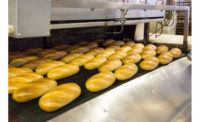An increasingly competitive landscape and weakening consumer spending will limit revenue growth to 3.9% for Canadian restaurants this year, according to The Conference Board of Canada's latest “Canadian Industrial Outlook: Canada's Food Services Industry.” That would be the industry's weakest performance since 2011.
"As restaurants vie for Canadians' food dollars, they will not only be competing against each other for market share, but with grocery stores as well. Dining at home is becoming relatively attractive compared with eating out, given slower growth in income and the fact that prices at restaurants have steadily risen despite a drop in grocery prices over the last year," says Michael Burt, director, industrial economic trends, The Conference Board of Canada, Canada. "Increased competition in the industry may drive the less-profitable independent restaurants out of business, as they struggle to compete with chains on food prices and keeping up with food trends."
Highlights of the report include:
- The number of restaurants in Canada has grown at a rate of 1.8% since 2011, well above the 1.1% growth in total population.
- Pre-tax profits in the foodservices industry are forecast to reach $1.6 billion in 2017.
- Canada's food manufacturing industry is forecast to grow 2.4% in 2017.
- Pre-tax profits in the food manufacturing industry are forecast to climb to $4.2 billion this year.
With consumer spending set to moderate due to weak income growth, expansion in restaurant traffic could slow, intensifying the fight for market share. The number of restaurants in Canada has grown at a rate of 1.8% per year since 2011, well above the 1.1% growth in total population. Meanwhile, steady price growth at restaurants and declining prices at grocery stores are expected to play a role in more consumers opting to dine at home. And, while restaurant prices grew by 2.3% in December 2016, grocery prices contracted by 2.8%.
One bright spot for the industry is strong growth in breakfast traffic, which rose by 6.3% in 2016 and now accounts for just under one in five restaurant visits. While it has historically been seen as a low-margin, low-revenue market, some fast food restaurants are capitalizing on rising demand for fast and portable breakfast options by introducing "all-day breakfast."
Tourism activity in 2017, including foodservices, should benefit from Canada's 150th anniversary of Confederation and Montreal's 375th anniversary of its founding. Consequently, growth in spending from international and domestic customers is expected to slow.
Although weakening margins continue to take a bite out of profits, the financial picture of the foodservices industry will remain stable through 2017. Cost growth will be held in check by weaker food prices, and while sales growth will slow, it will remain positive. All in all, pre-tax profits in the foodservices industry are forecast to reach $1.6 billion in 2017.
Canada’s food manufacturing industry
Canada's food manufacturing industry remains a strong performer in the manufacturing sector, and can expect solid sales growth of 4.1% in 2017, according to “Canadian Industrial Outlook: Canada's Food Manufacturing Industry.”
Canadian food manufacturers will continue to benefit from a strong export outlook largely driven by improving U.S. demand. However, amid growing uncertainty regarding the future of Canada's trade relationship with its largest trading partner, free trade agreements, such as The Comprehensive Economic and Trade Agreement (CETA), will continue to pave the way for Canadian food exporters to explore new market opportunities and diversify their customer base. CETA will see the elimination of tariffs on most processed foods, providing Canadian food manufacturers preferential access to the EU marketplace and a competitive advantage over producers from countries without similar agreements in place.
Weak agriculture commodity prices limited cost increases in 2016 and allowed profit margins to improve. As well, some manufacturers, particularly those that rely on imported inputs, will benefit from a decision by the Canadian government to repeal or amend roughly 200 different tariffs on imported food ingredients to support the competitiveness of Canada's food manufacturers. However, rising competition among food retailers is limiting the industry's ability to raise prices for grocers.
Industry margins are expected to soften modestly to 4% in 2017, but revenue growth will be sufficiently strong to allow pre-tax industry profits to climb to $4.2 billion.



